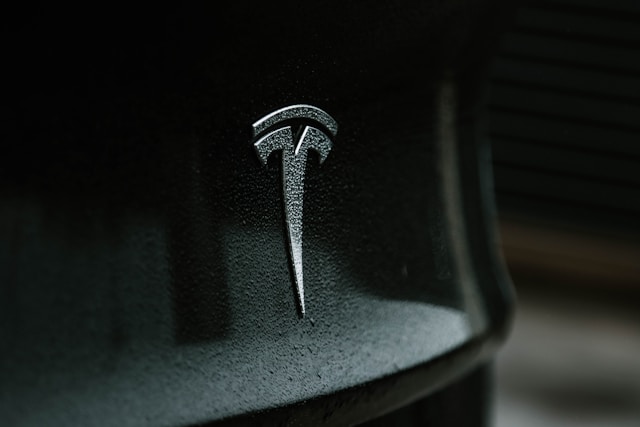Tesla, Inc., founded in 2003 and headquartered in Austin, Texas, is a prominent American company specializing in electric vehicles (EVs), energy storage solutions, and solar energy products. The company aims to accelerate the world’s transition to sustainable energy.
Automotive Segment: Tesla’s automotive lineup includes:
- Model S: A luxury sedan.
- Model 3: A more affordable sedan.
- Model X: A luxury SUV.
- Model Y: A compact SUV.
- Cybertruck: An all-electric pickup truck.
- Tesla Semi: An electric semi-truck.
These vehicles are produced across Tesla’s global manufacturing facilities, including:
- Fremont Factory (California, USA): Produces Model S, Model 3, Model X, and Model Y.
- Giga Nevada (USA): Focuses on battery production.
- Giga Shanghai (China): Produces Model 3 and Model Y.
- Giga Berlin (Germany): Produces Model Y and future models.
- Giga Texas (Austin, USA): Produces Model Y and is slated for Cybertruck production.
How does Tesla make money: Business Model & Supply Chain Analysis
In 2024, Tesla delivered approximately 1.789 million vehicles, maintaining a significant presence in the EV market.
Energy Generation and Storage: Beyond automotive, Tesla offers energy solutions:
- Powerwall: A home battery system for energy storage.
- Megapack: A large-scale battery system for utility projects.
- Solar Roof: Solar panels are designed to resemble traditional roofing materials.
These products aim to provide sustainable energy solutions for residential, commercial, and utility-scale applications.
Financial Performance: In 2024, Tesla reported revenues of approximately $97.69 billion, with a net income of $7.1 billion. Despite facing challenges such as increased competition and market fluctuations, Tesla continues to invest in innovation and expansion.
What is SWOT Analysis? Explained with examples
Here is the SWOT Analysis of Tesla
Strengths of Tesla
- Brand Power & Innovation Leadership
- Tesla is the world’s most valuable car company by market cap (over $600B as of early 2025).
- It ranked #1 in the US for EV sales in 2024, accounting for ~55% of the US EV market share.
- Vertical Integration
- Tesla builds its batteries (Gigafactories), develops its software (Autopilot, FSD), and sells directly via its website, bypassing traditional dealerships.
- Product Ecosystem
- It offers EVs at multiple price points (the Model 3 starts at around $38,000; the Model S exceeds $90,000).
- It also sells Powerwall, Powerpack, Megapack, and Solar Roof—enabling full-home sustainable energy setups.
- Technology Edge in Autonomy and AI
- Tesla has over 1 billion miles of real-world FSD data, feeding its AI training models.
- Developing the Dojo Supercomputer to enhance AI training capabilities.
- Global Manufacturing Footprint
- There are gigafactories in Fremont (US), Shanghai (China), Berlin (Germany), and Austin (Texas).
- Giga Shanghai alone produced over 900,000 vehicles in 2023.
- Strong Financials
- In 2024, Revenue was $97.7 billion; Net income was $7.1 billion.
- Maintains positive cash flow and high R&D spend (~$3.5 billion annually).
- Visionary Leadership
- Elon Musk drives innovation and media attention, helping Tesla punch above its weight in publicity and recruitment.
Weaknesses of Tesla
- Production Delays & Scalability Issues
- Cybertruck was delayed multiple times; mass production only began in late 2024—3 years after the announcement.
- Customer Service Concerns
- Tesla has received complaints about long wait times and inconsistent quality in service centers, especially outside major U.S. cities.
- Limited Model Variety
- While legacy automakers like Toyota offer 50+ models globally, Tesla currently sells fewer than 10 models.
- High Prices
- Tesla vehicles remain out of reach for many—only a tiny percentage of US households can afford new EVs at $40K+.
- Dependence on Elon Musk
- Musk’s behavior (e.g., controversial tweets, distractions from X, Neuralink, and SpaceX) has occasionally affected investor confidence and brand perception.
Opportunities for Tesla
- Global EV Adoption Surge
- EVs will make up 30% of global car sales by 2030.
- Countries like Norway (EV share >80%) and China (largest EV market) offer colossal expansion potential.
- Energy Storage & Solar Products
- The US home solar market is growing at 15–20% CAGR.
- Tesla’s Megapack is used in large utility projects (e.g., in California and Australia).
- Robotaxi & FSD Rollout
- Tesla plans to launch a fully autonomous Robotaxi network—which Musk says could double Revenue per car.
- Even partial FSD could unlock subscription revenue ($199/month per user).
- AI and Robotics (Optimus Bot)
- Tesla is developing the Optimus humanoid robot, which could be used in logistics, warehousing, and home assistance.
- Elon Musk claims Optimus could eventually be “more valuable than the car business.”
- Emerging Markets
- Tesla is exploring launching in India—potentially targeting a growing middle class and urban centers.
- Lower-cost EV variants (under $30,000) could increase global demand.
Threats to Tesla
- Intense Competition
- Legacy brands (Ford, GM, VW) and EV startups (BYD, Rivian, Lucid) are closing the gap.
- BYD surpassed Tesla in global EV deliveries in Q4 2023.
- Economic Pressures
- Higher interest rates and inflation can hurt discretionary spending, impacting EV sales.
- Government EV subsidies are reducing in some markets (e.g., US tax credit phase-outs).
- Supply Chain & Raw Materials
- Lithium prices are volatile, and over 60% of cobalt comes from the DRC, which poses geopolitical and ethical risks.
- Regulatory Scrutiny
- Tesla is under investigation by multiple agencies (e.g., NHTSA) regarding crashes involving Autopilot/FSD.
- EU and US are tightening laws on autonomous driving and data use.
- Technology Execution Risks
- If FSD or the Tesla Bot fails to meet expectations, it could affect trust, stock price, and growth potential.
- Cybertruck’s radical design may not appeal to mass buyers.
Check out SWOT Analysis of Global brands




